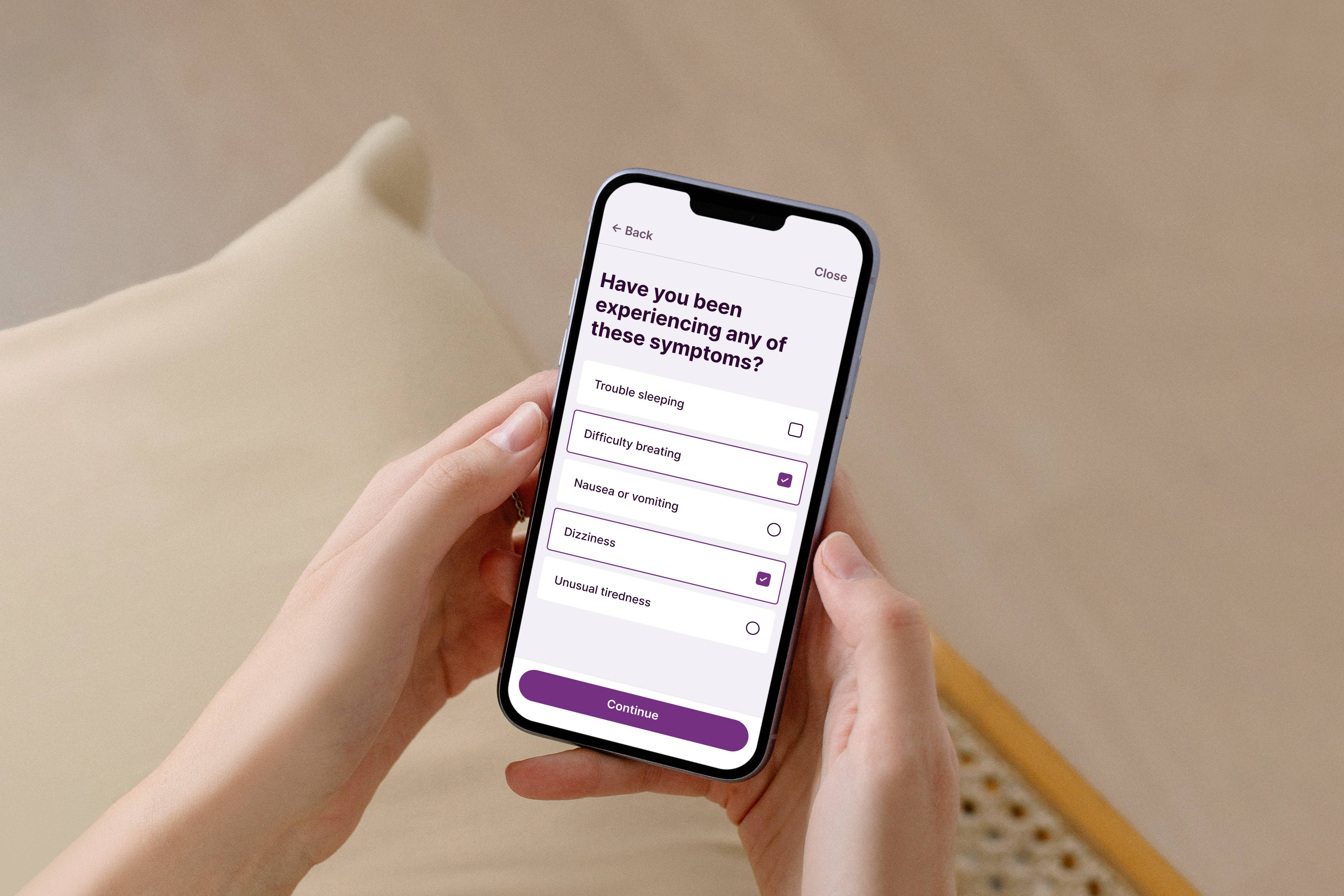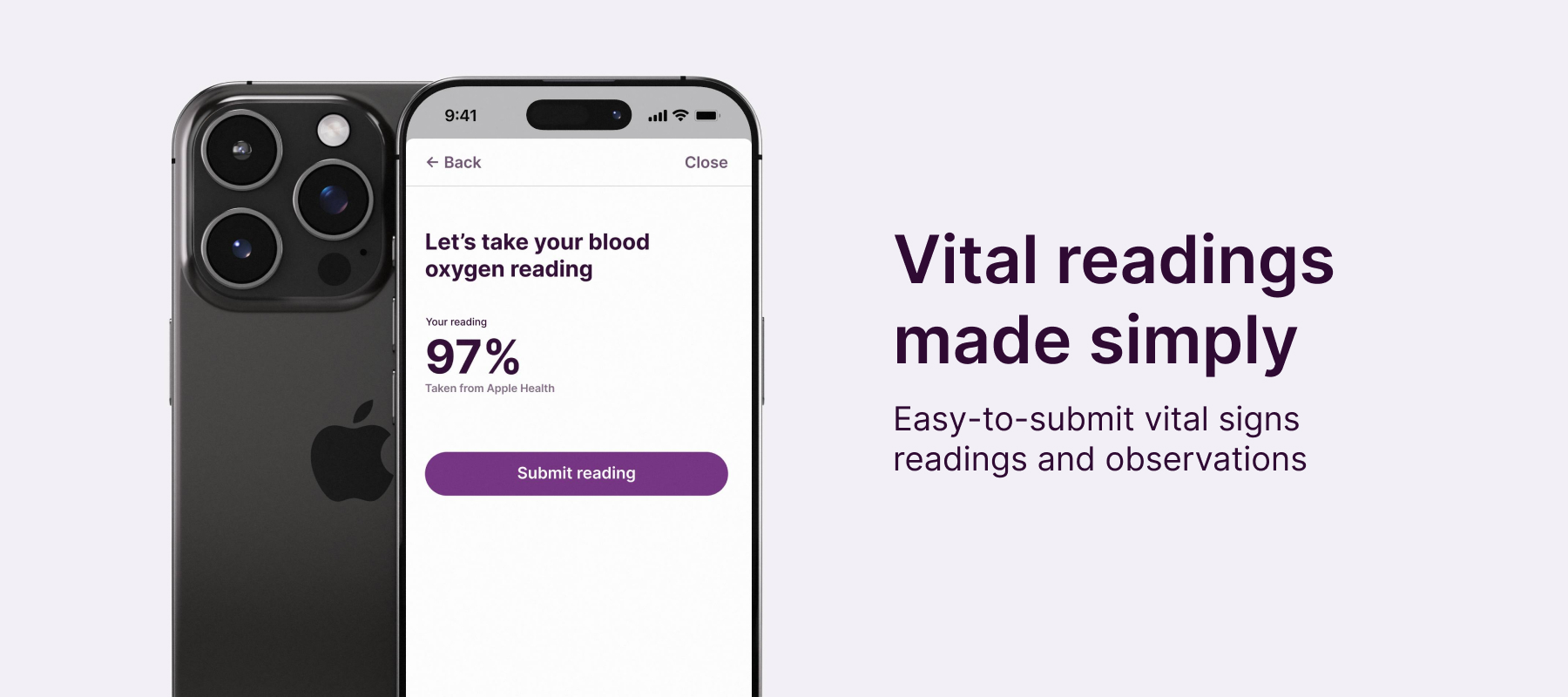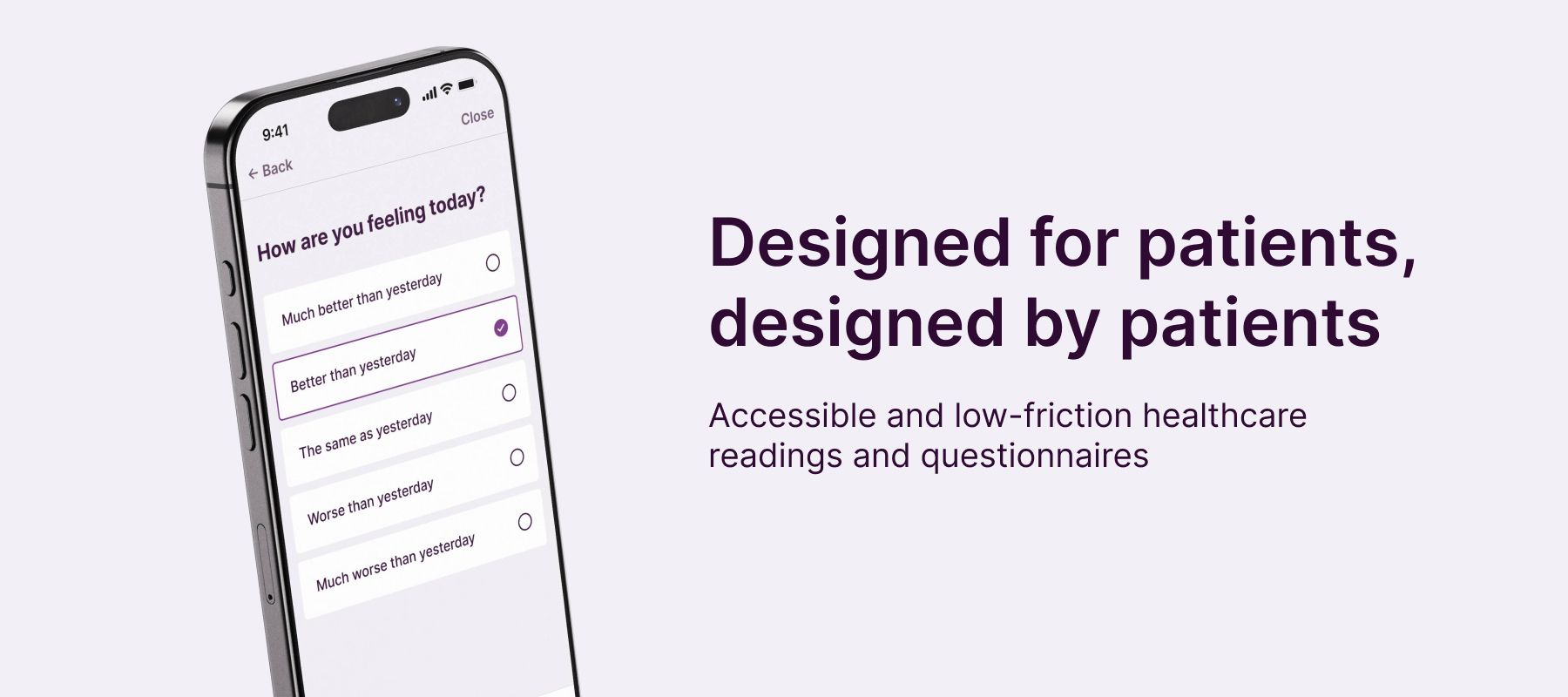
User interface design and testing
The patient app and clinician desktop dashboard interface prioritised clarity and accessibility. For the patient app, we implemented a clean, intuitive design with large touch targets, high contrast ratios, and simplified navigation suitable for users of all ages and technical abilities.
The clinician desktop platform featured a dashboard-driven approach with a color-coded alert systems, and streamlined workflows that reduced cognitive load during busy clinical hours. Consistent design patterns across both platforms ensured seamless user experience transitions.
The clinician desktop platform featured a dashboard-driven approach with a color-coded alert systems, and streamlined workflows that reduced cognitive load during busy clinical hours. Consistent design patterns across both platforms ensured seamless user experience transitions.
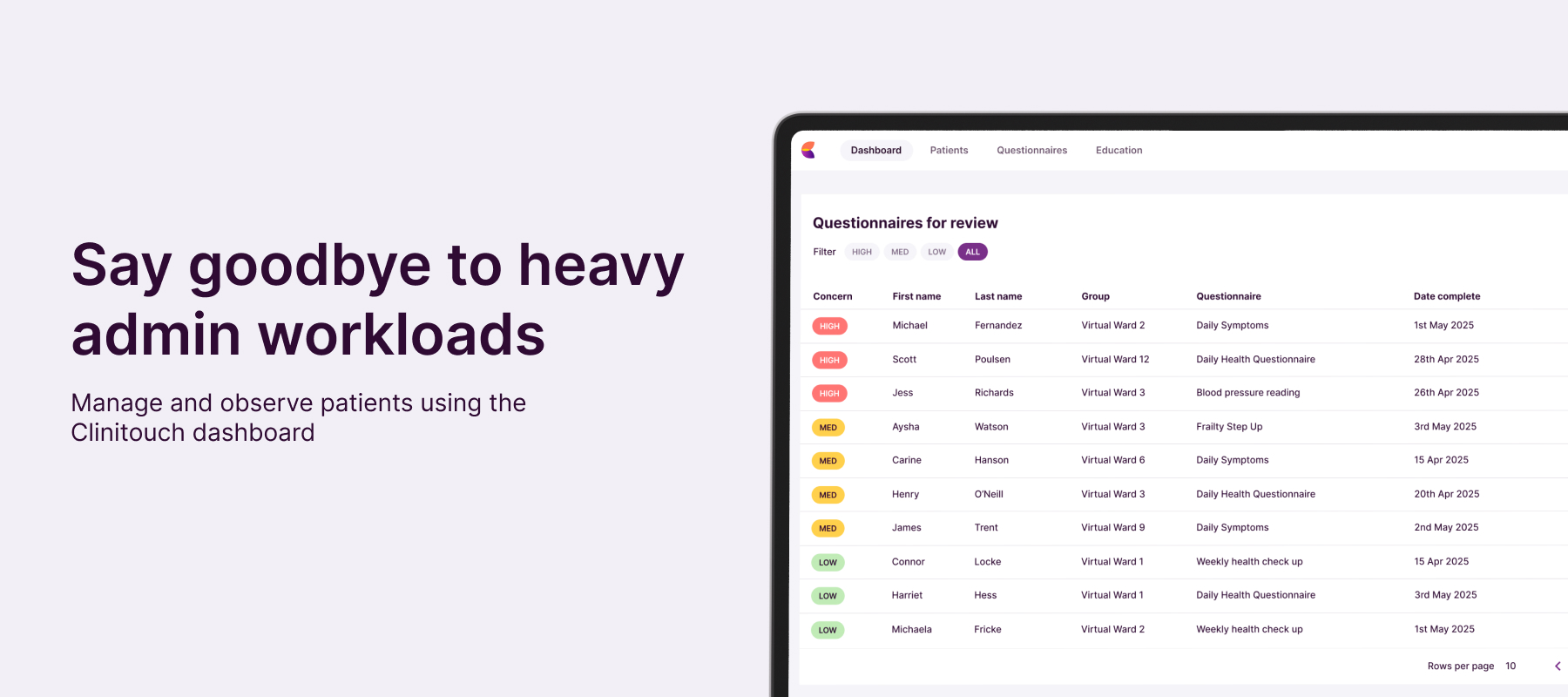
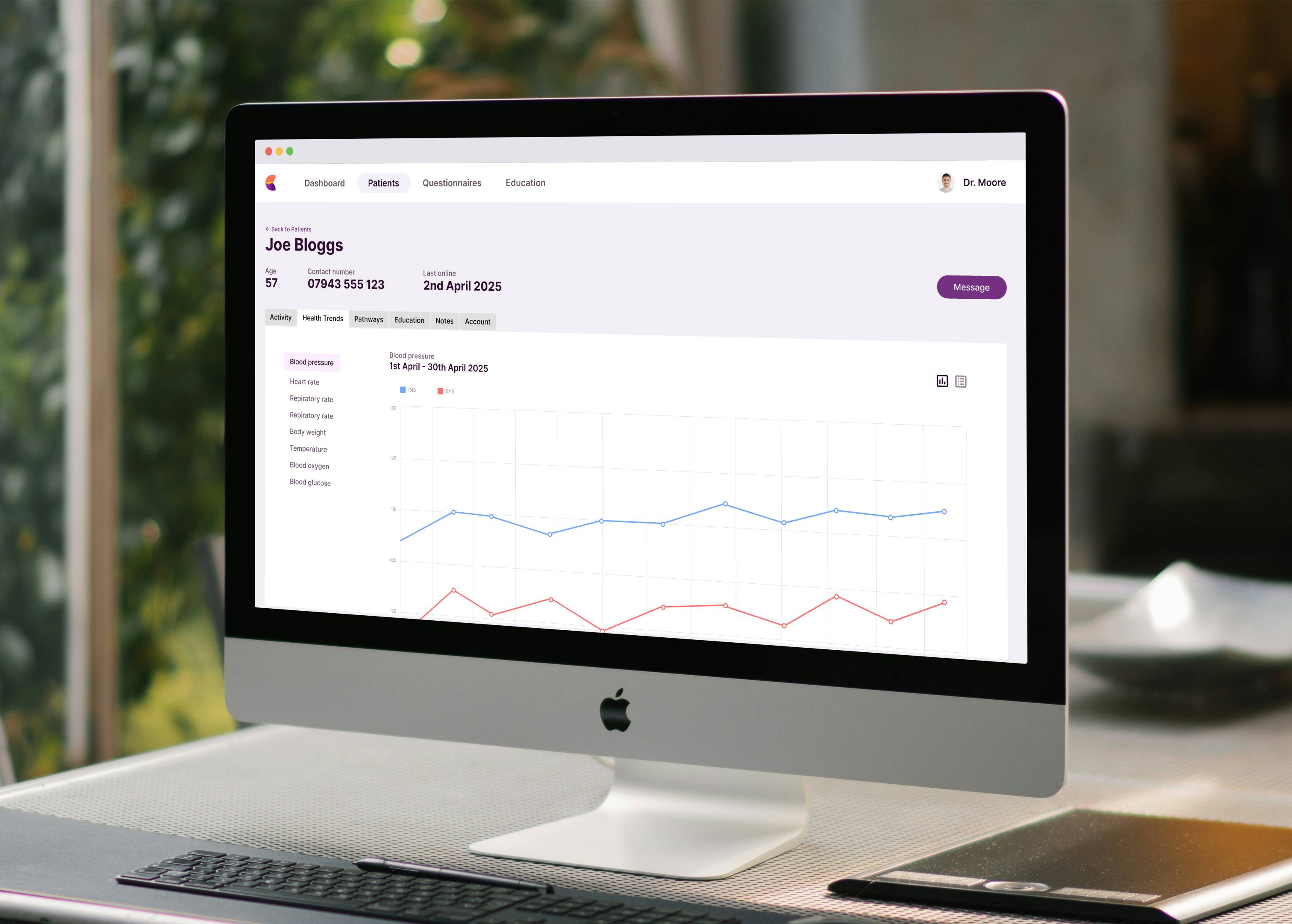
UX Research and Design
Our research approach combined ethnographic studies in clinical settings, remote environments, patient and clinician interviews, and usability testing with both user groups. We discovered that patients needed motivation and education integrated into their monitoring routine, while clinicians required efficient triage capabilities and flexible alert customisation.
This led to the development of personalised patient engagement features, contextual educational content, and sophisticated filtering systems for clinical workflows. Iterative testing and feedback loops ensured our solutions addressed real-world constraints and user mental models.
This led to the development of personalised patient engagement features, contextual educational content, and sophisticated filtering systems for clinical workflows. Iterative testing and feedback loops ensured our solutions addressed real-world constraints and user mental models.
Delivery
With support from an incredibly talented team, I engaged in cross-functional collaboration between engineering, design, clinical practice, and regulatory teams to deliver the platform within regulatory compliance requirements.
By creating a product roadmap and getting internal, and external, buy-in from stakeholder, we implemented an agile development process short, focused sprints, maintaining close partnerships with partners and end-users for continuous feedback integration. The platform launched successfully across multiple countries. Post-launch, I led ongoing optimisation efforts based on user analytics and stakeholder feedback, resulting in sustained user adoption and measurable improvements in patient outcomes.
By creating a product roadmap and getting internal, and external, buy-in from stakeholder, we implemented an agile development process short, focused sprints, maintaining close partnerships with partners and end-users for continuous feedback integration. The platform launched successfully across multiple countries. Post-launch, I led ongoing optimisation efforts based on user analytics and stakeholder feedback, resulting in sustained user adoption and measurable improvements in patient outcomes.
